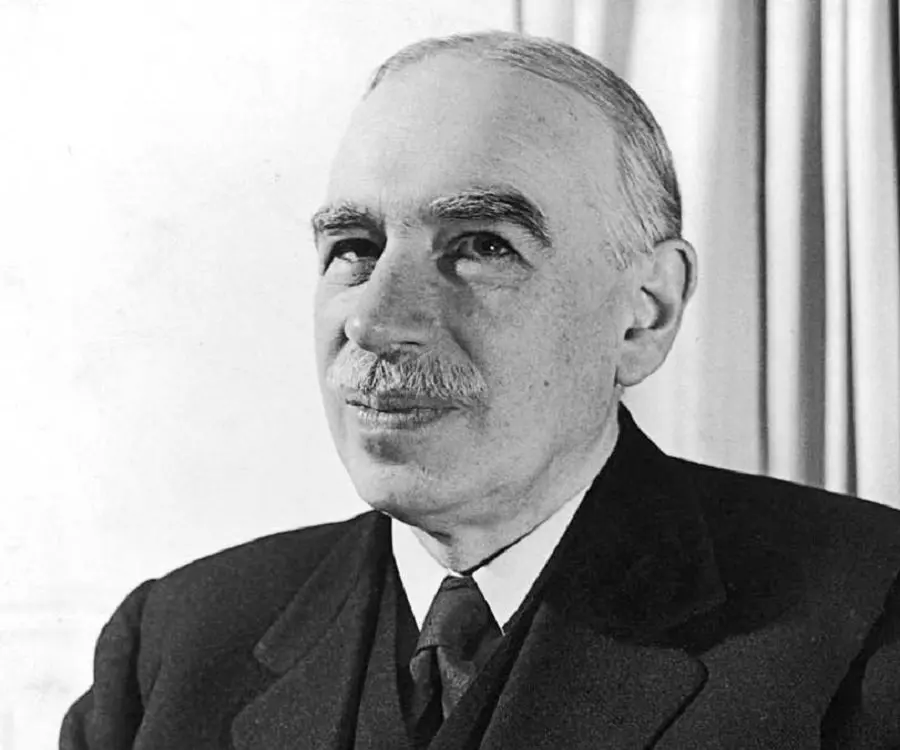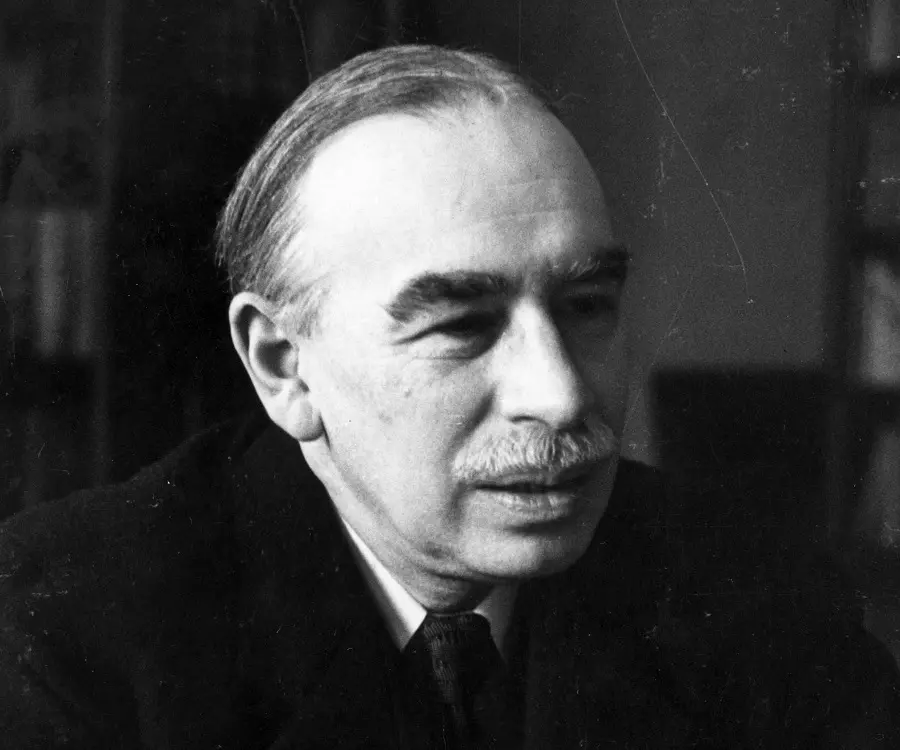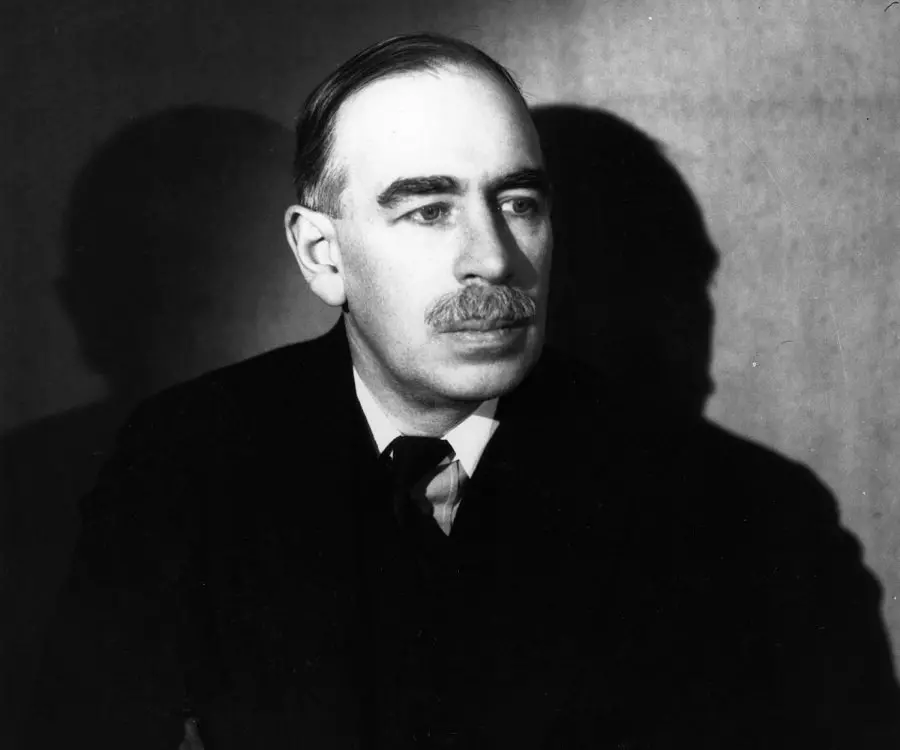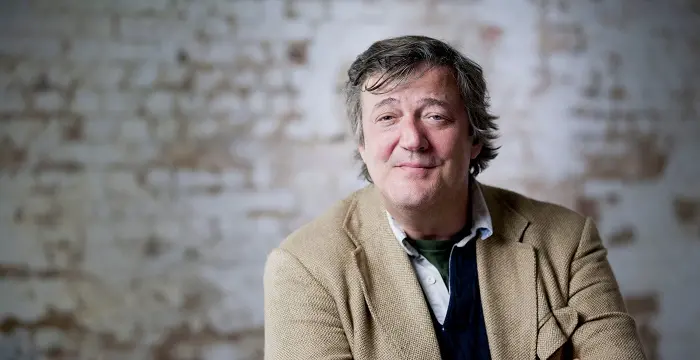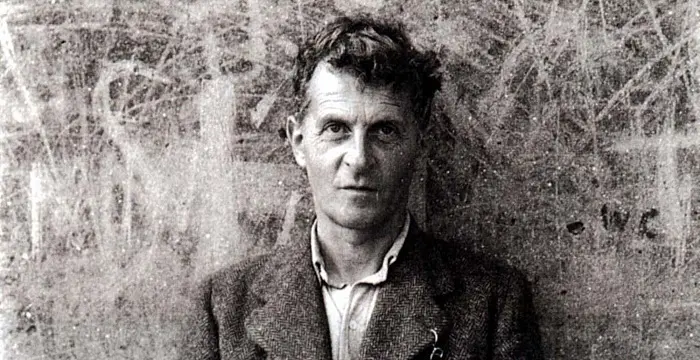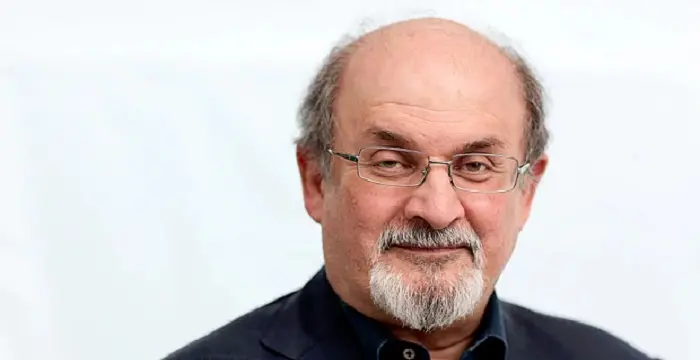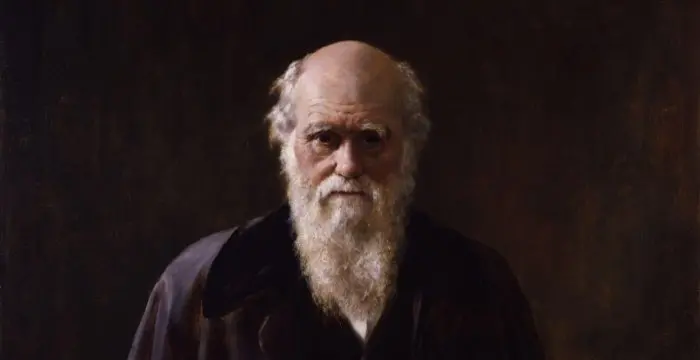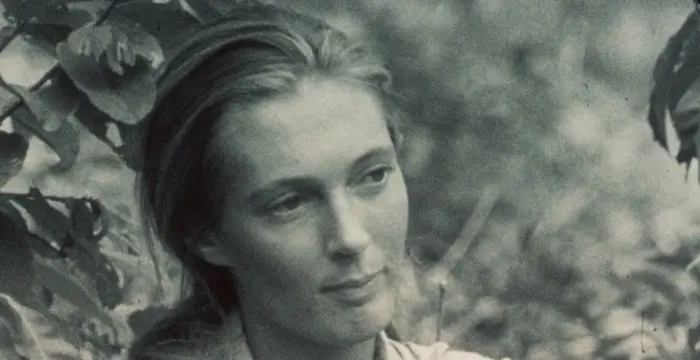
John Maynard Keynes - Eton College, Family and Childhood
John Maynard Keynes's Personal Details
John Maynard Keynes was the most influential British economist of the 20th century
| Information | Detail |
|---|---|
| Birthday | June 5, 1883 |
| Died on | April 21, 1946 |
| Nationality | British |
| Famous | Bisexual, Cambridge University, Eton College, Intellectuals & Academics, Economists, INTJ |
| Spouses | Lydia Lopokova (m. 1925-1946) |
| Siblings | Margaret Neville Keynes, Sir Geoffrey Keynes |
| Childrens | Sir Geoffrey Keynes |
| Universities |
|
| Notable Alumnis |
|
| Birth Place | CambridgeApril |
| Political Ideology | Liberal Party |
| Gender | Male |
| Father | John Neville Keynes, |
| Mother | Florence Ada Keynes |
| Sun Sign | Gemini |
| Born in | CambridgeApril |
| Famous as | Economist |
| Died at Age | 62 |
// Famous Intellectuals & Academics
Bertil Gotthard Ohlin
Bertil Gotthard Ohlin was a famous Swedish economist. This biography profiles his childhood, family life & achievements.
Emily Greene Balch
Emily Greene Balch was an American economist, sociologist and pacifist who won the 1946 Nobel Peace Prize. This biography of Emily Greene Balch provides detailed information about her childhood, life, achievements, works & timeline.
Martin Buber
One of the greatest philosophers to have ever walked on earth, Martin Buber contributions to philosophy is a long-standing one. Explore all about his profile, childhood, life and timeline here.
John Maynard Keynes's photo
Who is John Maynard Keynes?
John Maynard Keynes was the most influential British economist of the 20th century whose ideas fundamentally changed the practice of macroeconomics and the economic policies of the world. He is regarded as the founder of macroeconomics. He introduced Keynesian principles to the world that created a revolution in economic thinking with its unconventional approach. It challenged neoclassical economics and brought to the forefront the importance of state intervention to moderate the economic activity of the country and control the ‘boom’ and ‘bust’ phases. His 1936 book ‘The General Theory of Unemployment, Interest and Money’ was path-breaking in terms of content. Through his book, he argued that full employment could be maintained only with the help of government spending and that it could not always be reached by making wages sufficiently low. He believed that unemployment is basically caused if people don’t spend enough money. Lower spending results in demand falling further and a vicious circle commences which leads to job losses and a further fall in spending. Keynes’ solution to the problem was that governments should borrow money and boost demand by pushing the money into the economy. Once the economy has recovered and is expanding, governments should pay back the loans. Keynes was also responsible for the foundation of the International Monetary Fund (IMF) and World Bank (WB). Till date, he is best remembered as one of the world’s most influential economists of all time.
// Famous Bisexual
Bella Thorne
Bella Thorne is an American actress and singer. Let’s have a look at her personal and family life including age, net worth, relationships and fun facts.
Susan Sontag
Susan Sontag is an American critical essayist, cultural analyst, novelist, political activist, filmmaker and playwright of international repute. Read on to find out more about her childhood, career, profile and timeline.
Anna Paquin
Anna Paquin is a Kiwi film, theatre and television actress known for her roles in movies like ‘The Piano’, ‘Fly Away Home’, and ‘X-Men. This biography provides detailed information about her childhood, life, achievements, works & timeline.
Childhood & Early Life
John Maynard Keynes was born on June 5, 1883 in Cambridge to economist father John Neville Keynes and social reformer mother Florence Ada Keynes. He had two younger siblings.
Keynes started his education at the age of five and a half. However frail health led him to be tutored at home. He entered St Faith's Preparatory School in 1892. Academically bright, he gained a scholarship that earned him a place at Eton College in 1897. It was at Eton that he developed his love for mathematics, classics and history.
He won yet another scholarship in 1902 which led him to move to King’s College, Cambridge. While at Cambridge, economist Alfred Marshall implored him to study economics but in vain as Keynes became interested in philosophy instead.
In 1904, Keynes graduated with a Bachelor’s degree in Mathematics. Thereafter, he spent two years at the university campus, taking part in debates, studying philosophy and informally attending economics lectures as a graduate student for a term. This marked his only formal education in economics. In 1905, Keynes studied for Tripos and in the following year took civil service exams.
Career
In 1906, Keynes began his career in civil service as a clerk at the India Office. Though he enjoyed his work initially, he got bored by 1908 and resigned from his duty to return to Cambridge. At Cambridge, he began to work on probability theory.
In 1909, Keynes published his first professional economics article in the ‘Economics Journal’, on the effect of a global economic downturn on India. The same year, he accepted the post of a lecturer in economics offered by Marshall.
In 1913, based on his experience at the India Office, Keynes published his first book titled ‘Indian Currency and Finance.’ Following this publication, he was appointed to the Royal Commission on Indian Currency and Finance. At the commission, he reasonably fared well, by applying economic theory to practical problems.
With the onset of the World War I, Keynes was called on by the British government for his expertise. In 1915, he accepted a post at the Treasury. His role included designing the terms of credit between Britain and its continental allies, and acquisition of scarce currencies.
His sharp insight and strong acumen helped him work his ways up to the bureaucracy. In 1919, he was appointed financial representative for the Treasury to the 1919 Versailles peace conference.
His experience at the Versailles peace conference was influential in shaping much of his future life. He was against the burdensome policies that were trolling upon the defeated Germany. He argued that high compensation rates would traumatize innocent Germans and restrict their ability to buy exports thus affecting the economy of the world but his arguments were hardly noted.
John Maynard Keynes returned to Cambridge after resigning from his governmental duties and resumed teaching. Based on his arguments against the compensation imposed on Germans in the damaging Treaty of Versailles, he penned a highly influential book titled, ‘The Economic Consequences of the Peace’ in 1919. The book was highly acclaimed and earned him international fame despite being thought of as anti-establishment.
After the publication of the book, ‘The Economic Consequences of the Peace’, Keynes resigned from his post of a lecturer and stayed on as a fellow of King’s College, dividing his time between Cambridge and London.
In 1921, he published the book, ‘A Treatise on Probability.’ Considered an important work, it laid a philosophical and mathematical foundation of the probability theory. He dedicated much of the 1920s actively contributing to journalism and selling his work domestically and internationally as a financial consultant.
Though his writings were mostly sceptical, he did not challenge the conventional wisdom that favoured laissez-faire. However, twice his opinions would foreshadow the theoretical revolution that would be triggered in the 1930s: once in 1925 when he opposed Britain’s return to gold standard and the other was before Great Depression when he foretold the unemployment issue faced by workers, labourers and miners.
In 1925, when Winston Churchill re-established the gold standard after being backed by the Treasury and Bank of England, the standard had a depressing effect on Britain’s economy. In response to it, Keynes came up with his work, ‘The Economic Consequences of Mr Churchill’ that finally led to the abandonment of gold standard in 1931.
In 1930, Keynes came up with two volumes of ‘Treatise of Money’ in which he stated that the amount of money saved should not exceed the amount of money invested. This would lead to a rise in unemployment. He in fact stated that the correct course would be to encourage spending and discourage saving.
When the Great Depression was at its peak, Keynes came up with the book, ‘The Means to Prosperity.’ The book contained policies for tackling unemployment in global recession. It contained one of the first mentions of the multiplier effect. Interestingly, though addressed to British government, the book contained advice for other governments as well on tackling global recession.
In 1936, Keynes came up with his magnum opus, titled ‘The General Theory of Unemployment, Interest and Money.’ The book came at a time when the unemployment rate was over 20 per cent in Britain. It was path-breaking in terms of content and revolutionized the economic ideologies of the world. It introduced the notion of aggregate demand as the sum of consumption, investment and government spending. Keynes argued through his book that full employment could be maintained only with the help of government spending.
He argued that full employment could not always be reached by making wages sufficiently low. Unemployment is basically caused if people don’t spend enough money. Lower spending results in demand falling further and a vicious cycle commences which leads to job losses and a further fall in spending.
Keynes’ solution to the problem was that governments should borrow money and boost demand by pushing the money into the economy. Once the economy has recovered and is expanding, governments should pay back the loans.
The General Theory of Unemployment, Interest and Money’ set the foundation of modern macroeconomics. It became a benchmark for future economic thought. His ideas, which are fondly known as Keynesian principles followed one principal rule to reduce unemployment by increasing government spending even if that meant running on deficit budget.
His proposal of government running on budget deficit was highly criticized by certain economics, who accused Keynes of supporting irresponsible governance. However, Keynes made it clear that he was a firm believer in balanced budgets and regarded the proposals for programs of public works during the Great Depression as an exceptional measure to meet the needs of exceptional circumstances.
With the advent of the World War II, Keynes came to be regarded as the most influential economist in Britain. In 1937, he suffered from a severe heart attack. Two years later, he returned to teaching at the Cambridge.
Meanwhile, he penned an influential book on war finances ‘How to Pay for the War.’ Published in 1940, the book insisted that the war effort should be financed by higher taxation and compulsory saving rather than deficit spending so as to avoid inflation.
In 1941, John Maynard Keynes filled up a vacancy in the Court of Directors of the Bank of England and carried out a full term from the following April. Later in June 1942, he was rewarded for his service with a hereditary peerage in the King's Birthday Honours. The same year, he was made a member of the House of Lords.
During the World War II, he played an influential role in the negotiations that shaped the post-war international economic order. He served as the leader of the British delegation and chairman of the World Bank commission in the 1944 Bretton Woods conference. He argued for a radical system for the management of currencies, proposed the creation of a common world unit of currency, and oversaw the establishment of new global institutions - World Bank and International Monetary Fund.
Keynes’ health deteriorated heavily during the post-war days. However, despite his failing health, he continued to represent United Kingdom in international negotiations. Just before his death, he successfully obtained new and outstanding debts for the rebuilding of British economy in preferential terms.
Major Works
John Maynard Keynes’ most prominent work came in 1936 with his book ‘The General Theory of Employment, Interest and Money’. The book became a benchmark for future economic thought and laid the foundation for Keynesian principles that have sustained till date. Through the book, Keynes created a revolution in economic thinking by bringing to foray the importance of budget deficit.
Awards & Achievements
In 1917, on the King's Birthday Honours, John Maynard Keynes was appointed Companion of the Order of the Bath for his wartime work.
In June 1942, he was rewarded with a hereditary peerage in the King's Birthday Honours for his services. On July 7 the same year, he was gazetted as ‘Baron Keynes of Tilton, in the County of Sussex.
Personal Life & Legacy
John Maynard Keynes entered into a romantic relationship with Lydia Lopokova, a well-known Russian ballerina and one of the stars of Sergei Diaghilev's ‘Ballets Russes’ in 1921. The two married in 1925.
Keynes was a bisexual and had an affair with Duncan Grant in his early years. Grant served as his best man at the wedding. Keynes and Lopokova had no children.
He suffered from bad health towards the end of his career. While negotiating for the Anglo-American loan in Savannah, Georgia, in pursuit of favourable terms for UK, he suffered from a series of heart attacks. On returning to England, he suffered from yet another heart attack on April 21, 1946, which caused his death. He was aged 62.
In his lifetime and afterwards, Keynes has been referred to as one of the most influential economists of the 20th century. In 1999, to mark his legacy, ‘TIME’ magazine listed him on the ‘Most Important People of the Century’ list. Britain’s paper, ‘The Economist’ described him as the ‘Britain’s Most Famous 20th Century Economist.
// Famous INTJ
Nikola Tesla
Nikola Tesla was a Serbian-American inventor, best known for his development of alternating current electrical systems. This biography of Nikola Tesla provides detailed information about his childhood, life, achievements, works & timeline.
Karl Marx
Karl Marx was a Prussian-German philosopher, revolutionary, historian and socialist whose communist ideologies and works laid the foundation for ‘Marxism’. Explore this biography to learn more about his childhood, life achievements, works & timeline.
Jean-Paul Sartre
Jean-Paul Sartre was a great existentialist philosopher of the 20th century. Check out this biography to know about his childhood, family life, achievements and other facts related to his life.
John Maynard Keynes biography timelines
- // 5th Jun 1883John Maynard Keynes was born on June 5, 1883 in Cambridge to economist father John Neville Keynes and social reformer mother Florence Ada Keynes. He had two younger siblings.
- // 1892 To 1897Keynes started his education at the age of five and a half. However frail health led him to be tutored at home. He entered St Faith's Preparatory School in 1892. Academically bright, he gained a scholarship that earned him a place at Eton College in 1897. It was at Eton that he developed his love for mathematics, classics and history.
- // 1902He won yet another scholarship in 1902 which led him to move to King’s College, Cambridge. While at Cambridge, economist Alfred Marshall implored him to study economics but in vain as Keynes became interested in philosophy instead.
- // 1904 To 1905In 1904, Keynes graduated with a Bachelor’s degree in Mathematics. Thereafter, he spent two years at the university campus, taking part in debates, studying philosophy and informally attending economics lectures as a graduate student for a term. This marked his only formal education in economics. In 1905, Keynes studied for Tripos and in the following year took civil service exams.
- // 1906 To 1908In 1906, Keynes began his career in civil service as a clerk at the India Office. Though he enjoyed his work initially, he got bored by 1908 and resigned from his duty to return to Cambridge. At Cambridge, he began to work on probability theory.
- // 1909In 1909, Keynes published his first professional economics article in the ‘Economics Journal’, on the effect of a global economic downturn on India. The same year, he accepted the post of a lecturer in economics offered by Marshall.
- // 1913In 1913, based on his experience at the India Office, Keynes published his first book titled ‘Indian Currency and Finance.’ Following this publication, he was appointed to the Royal Commission on Indian Currency and Finance. At the commission, he reasonably fared well, by applying economic theory to practical problems.
- // 1915With the onset of the World War I, Keynes was called on by the British government for his expertise. In 1915, he accepted a post at the Treasury. His role included designing the terms of credit between Britain and its continental allies, and acquisition of scarce currencies.
- // 1917In 1917, on the King's Birthday Honours, John Maynard Keynes was appointed Companion of the Order of the Bath for his wartime work.
- // 1921In 1921, he published the book, ‘A Treatise on Probability.’ Considered an important work, it laid a philosophical and mathematical foundation of the probability theory. He dedicated much of the 1920s actively contributing to journalism and selling his work domestically and internationally as a financial consultant.
- // 1921 To 1925John Maynard Keynes entered into a romantic relationship with Lydia Lopokova, a well-known Russian ballerina and one of the stars of Sergei Diaghilev's ‘Ballets Russes’ in 1921. The two married in 1925.
- // 1925 To 1930Though his writings were mostly sceptical, he did not challenge the conventional wisdom that favoured laissez-faire. However, twice his opinions would foreshadow the theoretical revolution that would be triggered in the 1930s: once in 1925 when he opposed Britain’s return to gold standard and the other was before Great Depression when he foretold the unemployment issue faced by workers, labourers and miners.
- // 1925 To 1931In 1925, when Winston Churchill re-established the gold standard after being backed by the Treasury and Bank of England, the standard had a depressing effect on Britain’s economy. In response to it, Keynes came up with his work, ‘The Economic Consequences of Mr Churchill’ that finally led to the abandonment of gold standard in 1931.
- // 1930In 1930, Keynes came up with two volumes of ‘Treatise of Money’ in which he stated that the amount of money saved should not exceed the amount of money invested. This would lead to a rise in unemployment. He in fact stated that the correct course would be to encourage spending and discourage saving.
- // 1936In 1936, Keynes came up with his magnum opus, titled ‘The General Theory of Unemployment, Interest and Money.’ The book came at a time when the unemployment rate was over 20 per cent in Britain. It was path-breaking in terms of content and revolutionized the economic ideologies of the world. It introduced the notion of aggregate demand as the sum of consumption, investment and government spending. Keynes argued through his book that full employment could be maintained only with the help of government spending.
- // 1937With the advent of the World War II, Keynes came to be regarded as the most influential economist in Britain. In 1937, he suffered from a severe heart attack. Two years later, he returned to teaching at the Cambridge.
- // 1941In 1941, John Maynard Keynes filled up a vacancy in the Court of Directors of the Bank of England and carried out a full term from the following April. Later in June 1942, he was rewarded for his service with a hereditary peerage in the King's Birthday Honours. The same year, he was made a member of the House of Lords.
- // Jun 1942 To 7th Jul 1942In June 1942, he was rewarded with a hereditary peerage in the King's Birthday Honours for his services. On July 7 the same year, he was gazetted as ‘Baron Keynes of Tilton, in the County of Sussex.
- // 1944During the World War II, he played an influential role in the negotiations that shaped the post-war international economic order. He served as the leader of the British delegation and chairman of the World Bank commission in the 1944 Bretton Woods conference. He argued for a radical system for the management of currencies, proposed the creation of a common world unit of currency, and oversaw the establishment of new global institutions - World Bank and International Monetary Fund.
- // 21st Apr 1946He suffered from bad health towards the end of his career. While negotiating for the Anglo-American loan in Savannah, Georgia, in pursuit of favourable terms for UK, he suffered from a series of heart attacks. On returning to England, he suffered from yet another heart attack on April 21, 1946, which caused his death. He was aged 62.
- // 1999In his lifetime and afterwards, Keynes has been referred to as one of the most influential economists of the 20th century. In 1999, to mark his legacy, ‘TIME’ magazine listed him on the ‘Most Important People of the Century’ list. Britain’s paper, ‘The Economist’ described him as the ‘Britain’s Most Famous 20th Century Economist.
// Famous Cambridge University
Stephen Fry
Stephen Fry is a comedian, actor, author, television and radio presenter. Read the biography and know all about his childhood, career, profile and timeline.
Ludwig Wittgenstein
Ludwig Wittgenstein is a renowned philosopher. Read on to know about the life, career, and works of the famous Austrian philosopher Ludwig Wittgenstein.
Rupert Brooke
Rupert Brooke was an English poet who is widely known for his poem ‘The Soldier’, which was a part of five war sonnets. This biography of Rupert Brooke provides detailed information about his childhood, life, achievements, works & timeline
Salman Rushdie
Salman Rushdie is one of the most prominent writers of the twentieth century. Read the biography to get details about his life, childhood, profile & timeline.
Charles Darwin
Charles Darwin was one of the most influential figures in human history. Go through this biography to get details about his life, profile and timeline.
Jane Goodall
Jane Goodall is an English Animal Rights activist, famously dubbed as “The Woman who redefined man”. This biography of Jane Goodall provides detailed information about her childhood, life, achievements, works & timeline.
John Maynard Keynes's FAQ
What is John Maynard Keynes birthday?
John Maynard Keynes was born at 1883-06-05
When was John Maynard Keynes died?
John Maynard Keynes was died at 1946-04-21
Where was John Maynard Keynes died?
John Maynard Keynes was died in East Sussex
Which age was John Maynard Keynes died?
John Maynard Keynes was died at age 62
Where is John Maynard Keynes's birth place?
John Maynard Keynes was born in CambridgeApril
What is John Maynard Keynes nationalities?
John Maynard Keynes's nationalities is British
Who is John Maynard Keynes spouses?
John Maynard Keynes's spouses is Lydia Lopokova (m. 1925-1946)
Who is John Maynard Keynes siblings?
John Maynard Keynes's siblings is Margaret Neville Keynes, Sir Geoffrey Keynes
Who is John Maynard Keynes childrens?
John Maynard Keynes's childrens is Sir Geoffrey Keynes
What was John Maynard Keynes universities?
John Maynard Keynes studied at Cambridge University,Eton College, King's College, Cambridge, Eton College, University of Cambridge
What was John Maynard Keynes notable alumnis?
John Maynard Keynes's notable alumnis is Cambridge University, Eton College
What is John Maynard Keynes's political ideology?
John Maynard Keynes's political ideology is Liberal Party
Who is John Maynard Keynes's father?
John Maynard Keynes's father is John Neville Keynes,
Who is John Maynard Keynes's mother?
John Maynard Keynes's mother is Florence Ada Keynes
What is John Maynard Keynes's sun sign?
John Maynard Keynes is Gemini
How famous is John Maynard Keynes?
John Maynard Keynes is famouse as Economist



